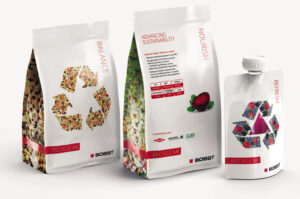Packaging design is an essential aspect of marketing a product. The packaging is often the first thing a consumer sees when they encounter a product, and it can play a significant role in determining whether they make a purchase. To create successful packaging, it is important to consider the needs and preferences of different generations and demographic groups. In this article, we will explore how to create packaging that meets the needs of different generations and demographic groups.
Understanding Different Generations
Each generation has its unique characteristics, values, and preferences, which can impact their purchasing decisions. Understanding these differences can help brands create packaging that appeals to each generation. Here are some key characteristics of different generations:
Baby Boomers – Baby boomers are generally defined as those born between 1946 and 1964. They are known for their work ethic, loyalty, and tendency to value quality over price. When designing packaging for baby boomers, it is important to emphasize quality, durability, and reliability.
Generation X – Generation X is generally defined as those born between 1965 and 1980. They are known for their independence, skepticism, and tendency to value authenticity. When designing packaging for Generation X, it is important to emphasize transparency and authenticity, and to avoid gimmicks or over-the-top packaging.
Millennials – Millennials are generally defined as those born between 1981 and 1996. They are known for their tech-savviness, social consciousness, and tendency to value experiences over possessions. When designing packaging for millennials, it is important to emphasize sustainability, social responsibility, and convenience.

Gen Z – Gen Z is generally defined as those born after 1996. They are known for their diversity, digital nativism, and tendency to value individuality. When designing packaging for Gen Z, it is important to emphasize personalization, authenticity, and social media-friendliness.
Understanding Demographic Groups
In addition to generational differences, it is also essential to consider the needs and preferences of different demographic groups. Here are some demographic groups to consider:
Gender – Gender can play a significant role in packaging design. For example, packaging for men may emphasize bold, masculine colours, while packaging for women may emphasize soft, feminine colours.
Culture – Cultural differences can also impact packaging design. For example, packaging for a product marketed in Asia may need to incorporate different colours, symbols, or images than packaging for a product marketed in North America.
Age – Age can also impact packaging design. For example, older adults may need packaging with larger fonts or clearer images, while younger adults may prefer packaging with more vibrant colours or trendy designs.
Creating Packaging that Meets the Needs of Different Generations and Demographic Groups
To create packaging that meets the needs of different generations and demographic groups, it is essential to conduct market research and collect data on consumer preferences. Here are some strategies for creating packaging that appeals to different generations and demographic groups:
Emphasize Quality and Durability
Baby boomers tend to value quality and durability over price. When designing packaging for this generation, it is essential to emphasize the quality and durability of the product. This can be done through the use of premium materials, clear messaging about the product’s features and benefits, and an overall design that conveys a sense of reliability and trustworthiness.

Emphasize Transparency and Authenticity
Generation X values transparency and authenticity. When designing packaging for this generation, it is important to emphasize the authenticity of the product and brand. This can be done through the use of clear messaging, simple and straightforward design, and a focus on the product’s natural or organic qualities.
Emphasize Sustainability and Social Responsibility
Millennials place a high value on sustainability and social responsibility. When designing packaging for this generation, it is important to emphasize the product’s eco-friendliness and social impact. This can be done through the use of recycled or biodegradable materials, clear messaging about the brand’s commitment to sustainability, and a focus on the product’s ethical and social benefits.
Emphasize Personalization and Individuality
Gen Z values personalization and individuality. When designing packaging for this generation, it is important to create packaging that is unique and stands out from the competition. This can be done through the use of bold colours, unusual shapes, and personalized messaging or branding.
Consider Gender and Cultural Differences
When designing packaging, it is important to consider gender and cultural differences. This can be done through the use of colours, symbols, and images that are culturally appropriate and resonate with the target audience.
Consider Age-Related Needs
When designing packaging, it is important to consider age-related needs. This can be done through the use of larger fonts or clearer images for older adults, or more vibrant colours or trendy designs for younger adults.

To create successful packaging, brands should conduct market research and collect data on consumer preferences, as well as consider the functional requirements of the product. By emphasizing quality and durability for baby boomers, transparency and authenticity for Generation X, sustainability and social responsibility for Millennials, personalization and individuality for Gen Z, and considering gender, cultural, and age-related differences, brands can create packaging that appeals to each generation and demographic group.
Moreover, it is important for brands to continuously evolve their packaging design and keep up with changing consumer preferences and trends. The packaging design should be regularly reviewed and updated to ensure that it remains relevant and appealing to the target audience.
Finally, it is important to note that creating packaging that meets the needs of different generations and demographic groups is not a one-size-fits-all solution. Different products and brands require different packaging designs that reflect their unique characteristics and target audience. Therefore, it is essential to conduct thorough research and understand the specific needs and preferences of the target audience before designing packaging.
In addition, brands should also consider the functional requirements of the product when designing packaging. Packaging should not only be visually appealing but also practical and able to protect the product during transportation and storage.
In conclusion, creating packaging that meets the needs of different generations and demographic groups is crucial to the success of a product. By considering the unique characteristics and preferences of each generation and demographic group, and incorporating design elements that resonate with them, brands can create packaging that appeals to a broad range of consumers and increases the likelihood of making a sale. By continuously evolving the packaging design and considering the functional requirements of the product, brands can stay relevant and maintain a competitive edge in the market.

















